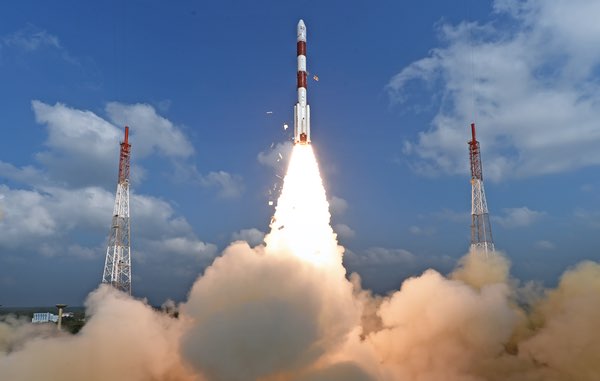The threat to ISRO’s position as a premier smallsat launch providerby Ajey Lele
|
| Apart from creating a world record, this mission has also attracted attention because of a view that such missions are detrimental to the health of the US space industry. |
The launch of ISRO’s Polar Satellite Launch Vehicle (PSLV) in its 39th flight (mission PSLV C-37) had a total payload of 1,378 kilograms. The main payload was India’s 714-kilogram Cartosat-2 satellite and two nanosatellites. The remaining payload of approximately 646 kilograms consisted of 101 cubesats. These satellites are launched under the commercial agreement between Antrix Corporation Limited, the commercial arm of ISRO, and various international customers.
The payload included 96 satellites for two private US companies from and one satellite each for Israel, Kazakhstan, The Netherlands, Switzerland, and the United Arab Emirates (UAE). Some 88 satellites belonged to a single firm, San Francisco-based imaging company Planet. Another San Francisco-based company, Spire Global, used this mission to send their eight Lemur nanosatellites into orbit for purposes of vessel tracking at sea and collection of weather data.
Before this mission, ISRO had launched only 79 satellites on commercial terms during the last three decades, and most of them were small satellites of some kind. With this launch, the total number of customer satellites launched by ISRO soared to 180.
Apart from creating a world record, this mission has also attracted attention because of a view that such missions are detrimental to the health of the US space industry. Particularly, with the present US administration being against outsourcing such businesses to non-US organizations, some argue that it will be difficult for ISRO to get such contracts in the future.
It is not for the first time that the US agencies have used ISRO launchers for their satellites. In June 2016, ISRO launched 13 small satellites, including the Earth imaging satellite made by Terra Bella, a Google-owned company. Google had acquired Terra Bella, originally known as Skybox Imaging, for $500 million in 2014. Recently, Google announced it will sell Terra Bella to Planet.
| Some expect that the new Trump Administration will not allow the small satellite launch business to leave the US. So, what could be the future of India’s satellite launch industry? |
For the private space industry in the US, the growth and progress of Planet certainly cannot be an issue, but awarding the satellite launch contracts to a non-US organization is problematic. Last year, some in the US raised questions about this issue. Their main concern was that, although export control licensing policy with regard to commercial launches continues to remain in place, special wavers are given for outsourcing launches without giving much of an explanation for doing so. (India became a member of Missile Technology Control Regime in June 2016 but permissions have been given before that, too.) It is perceived that no US company would be able to match ISRO for smallsat launches because it is a government agency that receives benefits like subsidies.
It should be noted that Planet had made attempts to work with US companies for undertaking launches of their satellites before turning to ISRO. In October 2014, Planet lost 26 satellites when the Orbital Scirnces Corp. Antares rocket exploded shortly after liftoff. Less than a year later, they also lost another eight satellites because of the failure of a SpaceX Falcon 9. Obviously, Planet was forced to look for other options.
Over last few years ISRO has demonstrated that PSLV is a reliable and cost-effective option, and this is the main reason various organizations keep approaching ISRO to launch their satellites. Once they complete their satellites, organizations are keen to launch them as soon as possible. It should be noted that, since rocket launches do not happen every day, customers are bound to opt for the services that offer them a convenient timeslot. In the US, NASA is known to do handholding of the domestic private space industry, and also offers them significant contracts too. Hence, it would not be correct to assume that only ISRO’s launch capabilites are subsided. There is a need for the US launch industry to ensure that they offer reliable and cost-effective option.
Some expect that the new Trump Administration will not allow the small satellite launch business to leave the US. So, what could be the future of India’s satellite launch industry? ISRO is proposing to engage Indian private industry, which would undertake the business of satellite launching. Naturally, with private companies coming in the loop, there could be some challenges to maintain the cost advantage. However, it would likely be still lower than the other globally available options. The real challenge would be to develop the credibility of the proposed system.
Today, many clients are knocking on the doors of ISRO, so it is expected that any loss of the trade from the US will not have much impact on India’s launch business. By launching 104 satellites on one rocket, India has attracted people’s imaginations. However, this is just the beginning and India needs to put in place a new approach to doing launches quickly.
